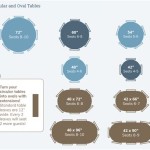The 4 Times Table Chart: Mastering Multiplication Up To 1000
The multiplication table, a cornerstone of arithmetic education, plays a vital role in developing mathematical fluency and problem-solving skills. While many learners initially focus on the 4 times table up to 12 or 20, extending this knowledge to 1000 offers a significant advantage. This extended chart fosters a deeper understanding of multiplication patterns, enhances mental calculation abilities, and provides a solid foundation for more complex mathematical operations. Understanding the 4 times table is not merely about memorization; it's about recognizing the inherent structure and applying it effectively.
This article will explore the 4 times table up to 1000, examining its patterns, practical applications, and strategies for effective learning and memorization. It will demonstrate how a comprehensive understanding of this seemingly simple table can unlock a broader range of mathematical capabilities.
Understanding the Core Pattern of the 4 Times Table
The 4 times table is predicated on the repeated addition of the number 4. Each subsequent multiple is derived by adding 4 to the previous result. This sequential addition creates a predictable pattern, which, when recognized, facilitates easier memorization and rapid calculation. For instance, 4 x 1 = 4; 4 x 2 = 8 (4 + 4); 4 x 3 = 12 (8 + 4), and so forth. This additive consistency is the fundamental building block of the entire table.
One key characteristic is that all multiples of 4 are even numbers. This stems from the fact that 4 itself is an even number. When an even number is multiplied by any integer, the resulting product will always be even. This serves as a readily verifiable rule for confirming the accuracy of calculated multiples.
Furthermore, the last digit of the multiples of 4 follows a cyclical pattern: 4, 8, 2, 6, 0. This pattern repeats itself throughout the entire table, from 4 x 1 to 4 x 1000. Recognizing this cyclic nature can be incredibly beneficial when attempting to recall specific multiples or verifying the accuracy of calculations, particularly when dealing with larger numbers.
To illustrate, consider the sequence of the last digits of multiples of 4: 4, 8, 2, 6, 0, 4, 8, 2, 6, 0, and so on indefinitely. This cyclical pattern continues without deviation. This makes estimating and quickly verifying multiples of 4 much easier.
Practical Applications of the Extended 4 Times Table
The practical applications of the 4 times table extend far beyond basic arithmetic. It is directly applicable in numerous real-world scenarios, from simple calculations to more complex problem-solving tasks. A strong understanding of the extended 4 times table enhances efficiency and accuracy in various fields.
For example, consider scenarios involving unit conversions. If one needs to convert units where a factor of 4 is involved, such as converting hours to quarter-hours, knowledge of the 4 times table becomes crucial. Similarly, if a problem involves dividing items into groups of four, a strong grasp of the 4 times table greatly simplifies the calculation process.
In financial planning, understanding the 4 times table can aid in calculating quarterly earnings or expenses. Many financial analyses are performed on a quarterly basis, meaning that multiples of 4 are frequently encountered. Quick recall of these multiples can expedite the analysis process and reduce the likelihood of errors.
In construction and engineering, where precise measurements are paramount, the 4 times table is invaluable. Calculating areas and volumes often involves multiplying dimensions, and if any of those dimensions are multiples of 4, the calculation simplifies significantly. Efficiently using the 4 times table can save time and increase precision.
Consider a scenario where you need to calculate the total cost of 27 items, each costing $4. Instead of resorting to standard multiplication, one could quickly recognize that 25 x 4 = 100 and 2 x 4 = 8; therefore, 27 x 4 = 108. This approach demonstrates the power of mental calculation facilitated by a strong understanding of the 4 times table.
Furthermore, understanding the 4 times table up to 1000 also enhances the ability to mentally estimate and approximate values. This is especially useful in situations where a precise calculation is not required, but a quick estimate is needed. This ability to quickly estimate improves overall problem-solving efficiency.
Strategies for Learning and Memorizing the 4 Times Table Up To 1000
Memorizing the entire 4 times table up to 1000 may seem daunting, but employing strategic learning techniques can make the process manageable and effective. Rather than rote memorization, focusing on understanding the underlying patterns and employing various mnemonic devices can significantly enhance retention.
One highly effective strategy is to break down the table into smaller, more manageable chunks. Instead of attempting to memorize all 1000 multiples at once, one can focus on learning sets of 10 or 20 multiples at a time. This incremental approach reduces cognitive load and promotes gradual learning.
Utilizing visual aids such as charts and diagrams can also be incredibly helpful. A well-designed chart can visually highlight the patterns and relationships within the 4 times table, making it easier to identify and remember the multiples. Coloring or highlighting specific multiples can further enhance visual memorization.
Another useful technique is to relate the 4 times table to other known multiplication tables. For instance, the 4 times table is essentially double the 2 times table. Knowing the multiples of 2 makes learning the multiples of 4 significantly easier. Similarly, the 8 times table is double the 4 times table, creating a hierarchical relationship that can aid in memorization.
Employing mnemonic devices, such as rhymes or acronyms, can also improve memory retention. For example, creating a simple rhyme for specific multiples can make them easier to recall. While creating mnemonics for all 1000 multiples is impractical, focusing on particularly challenging or frequently used multiples can be beneficial.
Regular practice and repetition are essential for solidifying knowledge of the 4 times table. This can involve dedicating a few minutes each day to reviewing the table or using interactive online tools and games to reinforce learning. Consistent practice helps to transfer the information from short-term to long-term memory.
Finally, it's important to actively test oneself and identify any gaps in knowledge. This can involve quizzing oneself or having someone else quiz you on the multiples of 4. Identifying and addressing any weaknesses ensures a comprehensive understanding of the table.
Extending the 4 times table up to 1000 provides a more robust understanding of multiplication principles. The ability to quickly recall and apply these multiples equips individuals with a valuable skillset for various mathematical and real-world applications.

Free Printable Multiplication Table Chart 1 1000 Template Essay Writing Skills

Free Printable Multiplication Table Chart 1 To 1000 How Memorize Things

Free Printable Multiplication Table Chart 1 1000 Template

Result For Times Chart 1000 Multiplication Table Facts Worksheets

Times Tables Charts Up To 12 Table

4 Times Table Z Score

Multiplication Table Of 1000 Times

Times Table Chart 4 Printable Gif 1000 1294 9 Tables Math Fact Worksheets

Multiplication Table 1000

Learn Mathematics Skills Interactive Activity Lessons Times Table Chart Tables Worksheets
Related Posts








